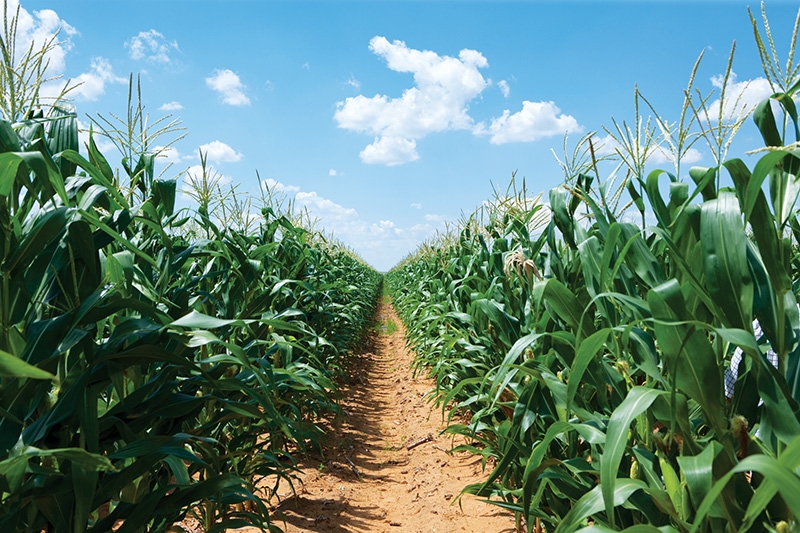Environment protection regulator reasserts safety of glyphosate
 |
| Glyphosate-based products, the most widely-used herbicides in the world, are asserted to be non-carcinogenic |
The decision, based on the agency’s (EPA) expert review over a 10-year period, noted that the extensive body of science continues to support the safety of herbicides containing glyphosate and that this active ingredient is not carcinogenic.
In its Interim Registration Review Decision, the EPA concluded that it “did not identify any human health risks” from exposure to glyphosate.
“The EPA’s latest decision on glyphosate-based herbicides adds to the long-term evaluation of leading international health authorities that these products can be used safely, and that glyphosate is not carcinogenic,” said Liam Condon, member of the management board at Bayer AG, and Crop Science Division president.
Condon noted that glyphosate-based herbicides are one of the most thoroughly studied products of their kind, which is a major reason why farmers around the world continue to rely on these products not only for effective weed control, but also to minimise tillage farming practices, reduce greenhouse gas emissions, preserve more land for native habitats, and provide enough food to meet the needs of a growing population worldwide.
“The EPA’s science-based, in-depth assessment by its expert team reflects a gold standard for scientific rigor that is respected by regulators and scientists across the globe,” Condon explained.
Previously, with the US Department of Justice and on behalf of the US government, the EPA had filed a litigation brief, supportive of Bayer’s arguments on the topic. In August, the EPA sent a letter to glyphosate registrants which stated respectively that a cancer warning on products containing this active ingredient would be “inconsistent with the agency’s scientific assessment of the carcinogenic potential of the product” and would be a “false and misleading statement.”
The EPA also said in its decision that “it used the most current science policies and risk methodologies to prepare a risk assessment in support of the registration review of glyphosate. The EPA thoroughly assessed risks to humans from exposure to glyphosate from all registered uses and all routes of exposure and did not identify any risks of concern.”
The EPA also reiterated its stance that “glyphosate is not likely to be carcinogenic to humans”.
Glyphosate-based products are the most widely-used herbicides in the world, and the EPA’s recent announcement is just the latest instance of a regulatory agency insisting that glyphosate is not carcinogenic.
Since the International Agency for Research on Cancer’s assessment in 2015, regulatory and scientific bodies that agree on the safety of glyphosate-based products include the European Food Safety Authority, European Chemicals Agency, German BfR, and Australian, Canadian, South Korean, New Zealand, and Japanese regulatory authorities, among others.
Last month Health Canada stated, “After a thorough scientific review, concerns about glyphosate safety could not be scientifically supported when considering the entire body of relevant data.”
Health Canada also noted that the 20 scientists who conducted the review, “left no stone unturned” and “had access to all relevant data and information from federal and provincial governments, international regulatory agencies, published scientific reports, and multiple pesticide manufacturers.”
As part of Bayer’s Transparency Initiative, the company has committed to enabling access to all of the in-depth glyphosate safety studies, as well as other crop protection studies, submitted to the European Food Safety Authority that Bayer has permission to disclose on its transparency platform.
Bayer remains committed to offering more choice for growers and announced last year an investment of approximately $5.5 billion to develop additional methods to combat weeds over the next decade.
What the stars mean:
★ Poor ★ ★ Promising ★★★ Good ★★★★ Very good ★★★★★ Exceptional
Related Contents
Latest News
More News
- 72 nations sign landmark Hanoi cybercrime convention (October 26, 2025 | 18:00)
- UN Secretary-General commends Vietnam’s global leadership (October 26, 2025 | 09:00)
- APEC finance ministers convene to tackle regional challenges (October 22, 2025 | 17:31)
- Rewiring global trade: ASEAN’s rise as supply chain hub (October 17, 2025 | 11:40)
- Vietnam attends first World Nuclear Week Forum in Russia (September 26, 2025 | 10:50)
- Vietnam attends 69th session of IAEA General Conference (September 16, 2025 | 10:00)
- ADB, WB pledge over 12 billion USD for ASEAN power grid, renewable energy projects (August 15, 2025 | 14:18)
- Lowy Institute proposes AI-based tobacco control solutions for ASEAN (August 15, 2025 | 14:14)
- Cloud computing policy to position Malaysia as regional hub by 2030 (August 15, 2025 | 14:11)
- Thailand, Cambodia suffer numerous cyber attacks (August 05, 2025 | 16:19)

 Tag:
Tag:




















 Mobile Version
Mobile Version